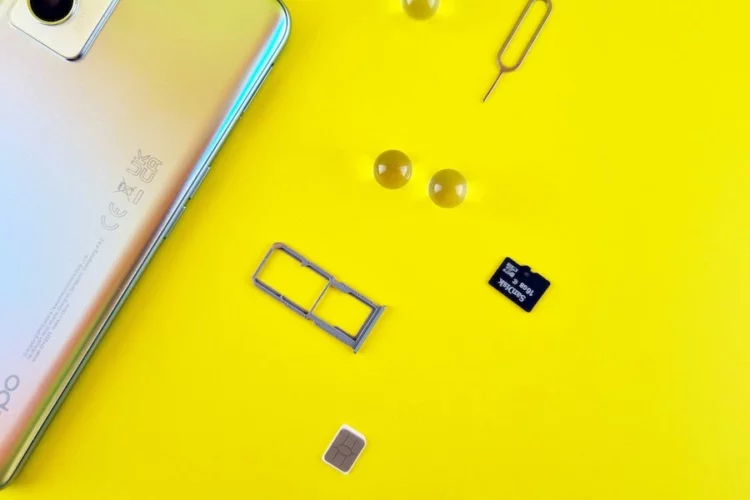Ubiquitous digitalization affects more and more areas. The complete rejection of the usual SIM cards is already everywhere. Old SIM cards will be replaced by a technology called eSIM card.
Today, we’ll say you all the truth about eSIM card in this article. After reading, you should decide for yourself whether to use esimplus.me or not.
What Is eSIM?
Embedded SIM has become the development of standard SIM cards. The latter became smaller with each new generation. However, it was impossible to reduce the size indefinitely, so discussions began in 2010 regarding the built-in electronic SIM card, and in 2016 the first version of the standard appeared.
eSIM is a special programmable circuit that actually replaces the SIM card. Initially, the technology was used in industry, however, after evaluating its advantages, many manufacturers of mobile electronics began to introduce such chips into their gadgets.
Advantages Of eSIM
- Cost reduction is one of the priorities of almost any company. That is why firms, for example, are switching to electronic document management and trying to automate various processes. Using eSIM not only allows you to save money but also offers other amenities.
- Cost savings for the operator. A modern SIM is a small computer with flash memory, on which various working information is recorded. Buying SIM cards directly from the manufacturer is an additional waste for the operator. And over time, they will only grow, given the planned increase in the cost of production. These costs are now covered by customers, but they cannot last forever. Mastering eSIM technology is an opportunity to reduce the cost of buying chips, as well as increase their competitiveness, because more and more people will prefer to use eSIM rather than pay for a “plastic chip.”
- Space-saving for mobile electronics manufacturers. As you may have noticed, the eSIM is almost two times smaller than the nano-SIM, and if compared with the card slot itself, the difference will be even greater. If you can still find a place for a SIM slot in a smartphone, then this is a problem in smartwatches or other miniature gadgets. Switching to eSIM just allows you to save valuable space.
However, how exactly to use the vacated space has yet to be figured out. In the same iPhone 14, instead of a slot, engineers put a regular plastic plug.
- It is impossible to lose a SIM card. For ordinary users, eSIM also offers a lot of amenities. One of the most important things is no more problems with a small piece of plastic. The built-in chip cannot be lost no matter how hard you try, which means you do not need to be afraid of losing important numbers that are stored on the SIM card.
- Convenient connection and change of operators. With eSIM, you do not have to go to the communication salon to connect some tariff. You can do this remotely via the Internet. Not all operators offer such a service yet, but it’s a matter of time. You can also change the operator without leaving home. This is especially true when traveling abroad when you have to buy a local SIM card.
- One room for several gadgets. So far, this idea is only in theory, since there are restrictions on SIM cloning at the legislative level. But, if they are solved, then you will be able to answer calls, for example, from a smartphone or work tablet.
- Additional security. Since eSIM cannot be moved to another smartphone, it will be more difficult for attackers to gain access to banking and other services with SMS confirmation. At the same time, since the SIM card is built-in, the lock can be applied to the entire smartphone and very quickly regain the number.
Disadvantages Of eSIM Card
- Low implementation rate. The first gadget with eSIM support appeared back in 2015 — it was a Samsung Gear S2 smartwatch. Now on the market, you can find more than 80 models with technology support: these are gadgets from Apple (iPhone, iPad, Apple iWatch), Samsung, Huawei, and Google (Pixel). There are separate SIM-enabled devices from Lenovo, Motorola, Oppo, and Microsoft. But these are usually gadgets from the high-price segment.
Many other manufacturers are still not embedding eSIM chips in their devices. Such low implementation rates are largely due to the need for integration with operators. It simply makes no sense for buyers to take a smartphone with eSIM if the local operator does not even offer services. Providers, in turn, are in no hurry to introduce such services, since the number of smartphones with eSIM is small. It turns out to be a vicious circle, the way out of which are very small steps.
- A violation of the balance. The introduction of eSIM will really allow operators to get rid of the purchase of hundreds of thousands of chips. However, in contrast, other problems appear. The possibility of remote connection will lead to the need to get rid of numerous communication salons since they will actually be unnecessary. It will be enough to leave several points around the city to solve issues that require personal presence.
- Remote connection of the tariff plan opens the way for so-called “virtual operators.” These companies do not need to maintain numerous points of sale and spend money on chips. This means that they will also offer connection services at more favorable prices.
- Security issues. The need to conclude security agreements directly with manufacturers of devices that use eSIM chips. However, large companies like Apple will not make any concessions or changes just for the sake of the legislation of individual countries.
- The possibility of revocation of certificates. Since the authenticity of the security certificates used will be confirmed by foreign centers, in the worst-case scenario, you can simply disable all eSIM.
- Potentially dangerous code. No one guarantees that gadget developers will not embed any code into the eSIM chip to collect user information, including call history, messages, and location.
In addition, possession of cryptographic keys will allow you to clone a user profile or even perform wiretapping. That is, your SIM card can be stolen remotely — it is difficult but quite feasible.
Conclusion
eSIM technology can be conditionally compared with virtual reality. Yes, there is already an assortment of advanced VR helmets on the market and a fairly large selection of games. However, virtual reality will not soon replace the usual mouse and keyboard.
A similar situation with eSIM — enabled gadgets are becoming more and more, and major operators offer connectivity without the need to visit the office. But customers do not yet see a special need to switch to a built-in SIM card, especially in the absence of a gadget with the corresponding chip.







